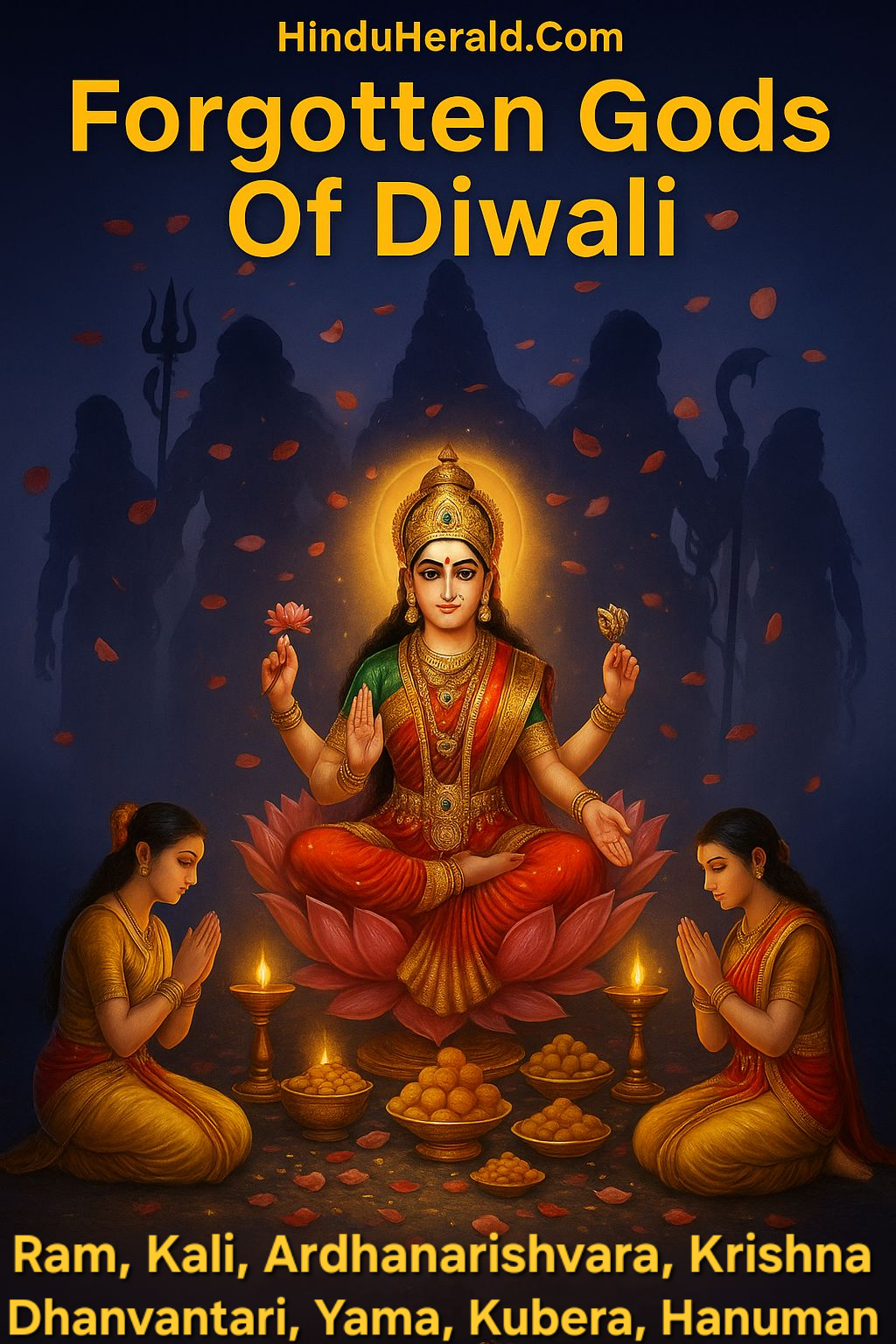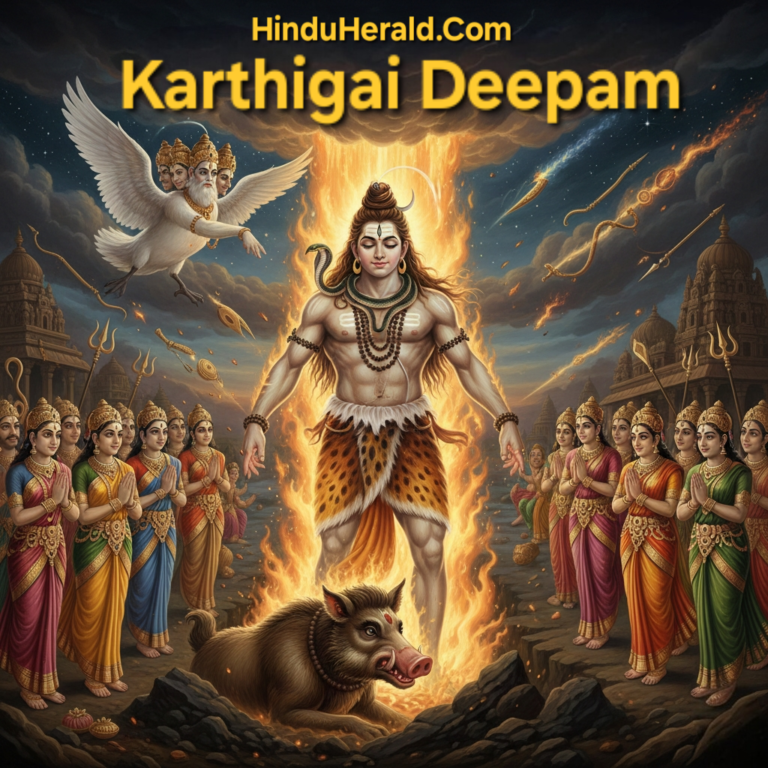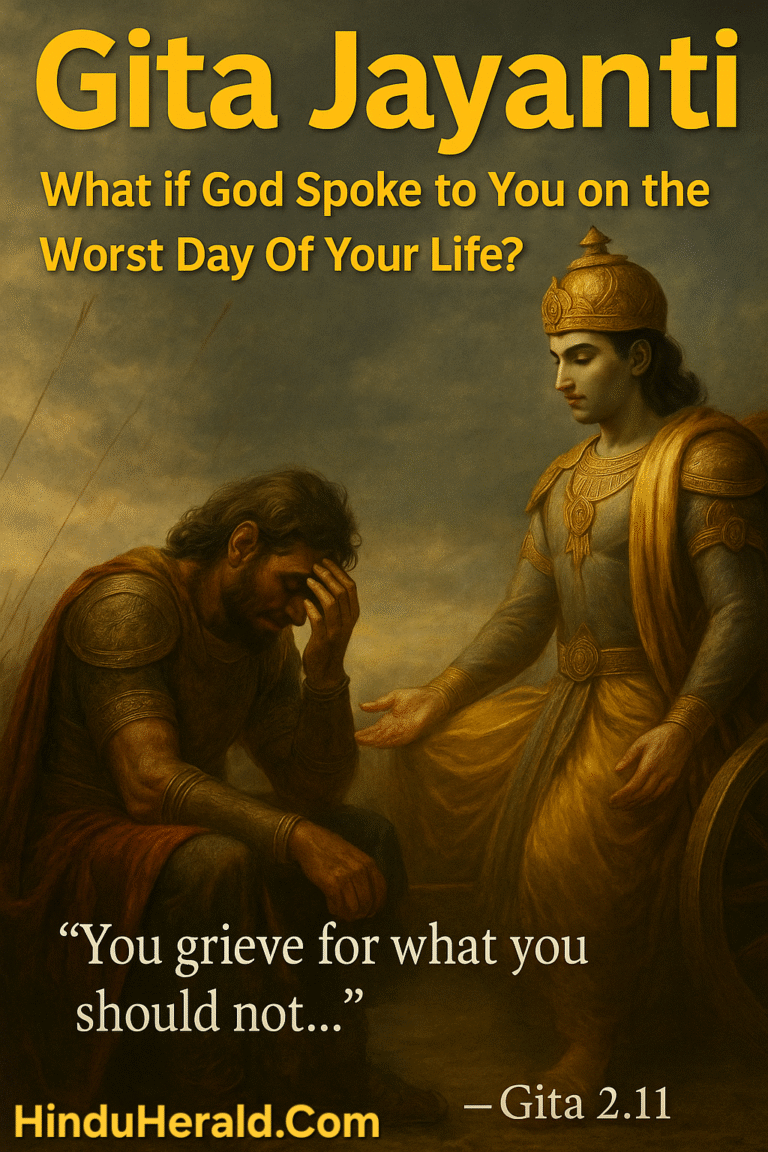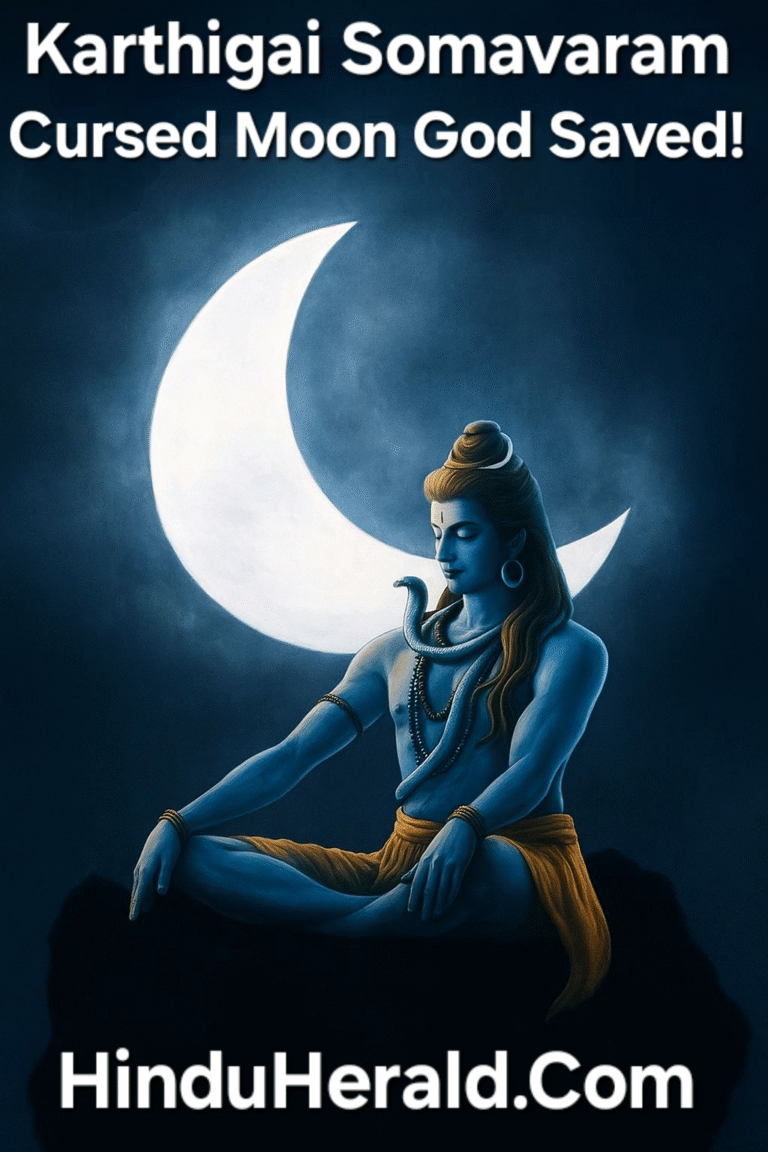
🪔 Forgotten Gods of Diwali — The Deities We No Longer Remember
By Hindu Herald Staff
🌌 Diwali Was Never Meant to Be Shallow
Every year, Diwali returns with glittering lights, sweets, and a frenzy of shopping. Lakshmi takes center stage — her name printed on donation envelopes, her face stamped on gold coins, her blessings invoked with sugar-coated devotion.
But Diwali is older than bank balance rituals and LED diyas.
It was once a night that held death and resurrection, exile and homecoming, cosmic union, demonic defeat, and soul-liberating knowledge. A night when many gods stood in the firelight — not just one.
Today, most of them have faded into shadow.
This article is for them.
🪔 LORD RAM
Diwali is the day Lord Ram returned to his kingdom in Ayodhya after 14 years of exile. Ram, Sita, and Lakshman journeyed home aboard a vimana — a divine aerial vehicle. But it was Amavasya, the darkest night of the month, and there was no moon to light the way. The people of Ayodhya lit countless rows of diya lamps so that Ram could see the lights from the sky and find his way home.
This is the origin of our modern lamp-lighting tradition.
With the construction of the Ram Mandir in Ayodhya, Lord Ram will definitely not be forgotten this year in India — especially in the North, where he is already widely celebrated. But in many diaspora temples, particularly in the United States, it is Lakshmi who takes center stage:
- Homes are cleaned for Lakshmi
- Rangolis are drawn for Lakshmi
- Pujas and archanas are sponsored for Lakshmi
- Donation boxes overflow in hopes of Lakshmi’s blessings
Ram is often left out entirely in the West. There are no pujas, no archanas, no celebration of his return. When asked about Diwali, many Hindus offer a generic answer: “It’s about light over darkness, good over evil.” The sacred homecoming of Lord Ram is never mentioned.
🖤 GODDESS KALI
On Diwali night, Shaktas across Bengal, Odisha, Assam, and parts of Bangladesh celebrate Kali Puja.
Diwali falls on the Amavasya (new moon) of the month of Kartik — the darkest night of the year. On this night, the veil between the physical world and the spirit realm is said to thin. While many temples perform protective pujas for deities like Hanuman and Bhairava, Shaktas summon the fiercest protector of all — Mahakali.
Her worship takes place at midnight, often in cremation-ground settings, surrounded by tantric offerings and fiery mantras. She is not the goddess of polite society. She is the destroyer of ignorance and illusion.
🔱 KEDARESHWARA / ARDHANARISHVARA
This Shaivite puja falls on Diwali night (Kartik Amavasya) and honors Lord Shiva as Kedareshwara, the Lord of the Field, and also as Ardhanarishvara, the merged form of Shiva and Parvati.
The Story:
A sage named Bhringi was a devotee of Shiva who refused to worship Parvati. When she sat beside Shiva to receive equal honor, Bhringi transformed into a bee and flew only around Shiva, excluding her. In anger, Parvati withdrew her Shakti from his body. Since flesh and blood come from the mother and bones from the father, Bhringi became a mere skeleton — unable to stand. Shiva, moved with compassion, gave him a third leg.
To ensure that no one would ever again think that Shiva and Shakti are separate, Parvati performed a deep penance to unite her body with Shiva’s. Pleased, he agreed. Their forms merged into Ardhanarishvara — a half-male, half-female deity symbolizing universal harmony. On the right hand side of the body is Shiva’s form and on the left side is Parvati’s form.
In the 21 days leading up to Diwali, women perform Kedara Gauri Vrat, involving fasting, ritual observances, and a sacred thread with 21 knots. The vrat culminates on Diwali day with the Kedareshwara Puja, especially in Shaivite temples.
🦚 LORD KRISHNA
On Naraka Chaturdashi, the day before Diwali, Krishna slew the demon Narakasura and freed 16,100 captive princesses. Instead of abandoning them, he married them all — restoring their dignity in a society that would have rejected them.
Later in the Diwali cycle comes Govardhan Puja, commemorating the time Krishna lifted Mount Govardhan to shield Vrindavan from Indra’s wrathful storms. Both stories speak of rescue, protection, and divine shelter — themes central to Diwali’s soul.
🛡️ HANUMAN
Before Ram’s name is uttered, Hanuman’s is invoked. On the darkest night of the year, he is the fearless guardian who watches over homes and temples. Many traditions begin Diwali worship with a Hanuman puja to shield against spiritual forces. In South India, Kartik month is sometimes associated with Hanuman Jayanti as well.
💊 DHANVANTARI
On Dhanteras, many rush to buy gold and new possessions. But the day is truly about Dhanvantari, the divine healer who emerged from the cosmic ocean with a pot of Amrita. He is the god of Ayurveda, and Dhanteras was originally a day for invoking health, not hoarding.
⚖️ YAMA
On Dhanteras, a small lamp called the Yama Deepam is lit and placed outside the house to ward off untimely death. On the final day of the Diwali cycle, Bhai Dooj honors the bond between siblings through the legend of Yama and his sister Yami, who welcomed him with respect and aarti.
💰 KUBERA
Kubera is the treasurer of the gods — the guardian of wealth, not just its granter. While Lakshmi gives, Kubera safeguards. In earlier times, both were honored together. Now, his name barely surfaces during Diwali.
🌍 How Other Religions Celebrate on Diwali Day
🕊️ SIKH CELEBRATION – BANDI CHHOR DIVAS
For Sikhs, Diwali aligns with Bandi Chhor Divas, the day Guru Hargobind Ji was freed from Mughal imprisonment. He negotiated the release of 52 Hindu kings with him, becoming a symbol of interfaith justice and liberation. The Golden Temple shines bright in his honor.
🌿 JAIN CELEBRATION – MAHAVIR’S MOKSHA
For Jains, Diwali marks the night Lord Mahavir attained moksha. Followers light lamps to honor the light of his teachings. It is not a festival of commerce, but of spiritual triumph and inner purity.
🧘 BUDDHIST MEMORY – ASHOKA’S CONVERSION
In some traditions, Diwali is remembered as the turning point for Emperor Ashoka — the night he abandoned bloodshed after the Kalinga War and embraced Buddhism. From conquest to compassion, his story reflects the transformative power of Diwali’s light.
So when you light your diya this Diwali — remember the whole pantheon, not just one goddess.
Remember Ram’s return, Kali’s fire, Shiva and Shakti’s union, Krishna’s rescues, Hanuman’s vigilance, Dhanvantari’s medicine, Yama’s warning, Kubera’s vault, and the saints of other religions who found freedom on this same night.
The festival of lights was never meant to be one flame. It was a constellation. Let it shine again.
© 2025 Hindu Herald. All rights reserved.



